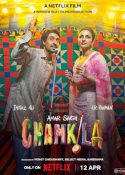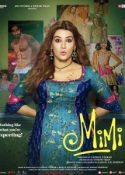 His first film, Khosla Ka Ghosla was a hit with audiences and critics and showcased the director’s talent for telling a wonderful story filled with drama, comedy and much more. For his second film, Oye Lucky Lucky Oye, Dibakar Banerjee not only took on the director mantle, he also crafted the script along with Urmi Juvekar Chiang. Produced by big production house UTV, the film stars Abhay Deol, Neetu Chandra and Paresh Rawal. About the direction of the film, our reviewer said, “It also makes sense as to why UTV have chosen to stay with Dibakar Banerjee on this project, as he too impresses with the innovativeness he has taken to create another joy ride in the form of a robber’s life from childhood to adolescence. The expectations were high post the Khosla Ka Ghosla success and Banerjee has lived up to his reputation. He clearly knows how to take a simple topic, add humor and make it into an enjoyable movie experience.” Mr. Banerjee recently took time out of his busy schedule to talk to BollySpice.com about all things Oye Lucky Lucky Oye, including how it was to work with stars Abhay Deol and Neetu Chandra.
His first film, Khosla Ka Ghosla was a hit with audiences and critics and showcased the director’s talent for telling a wonderful story filled with drama, comedy and much more. For his second film, Oye Lucky Lucky Oye, Dibakar Banerjee not only took on the director mantle, he also crafted the script along with Urmi Juvekar Chiang. Produced by big production house UTV, the film stars Abhay Deol, Neetu Chandra and Paresh Rawal. About the direction of the film, our reviewer said, “It also makes sense as to why UTV have chosen to stay with Dibakar Banerjee on this project, as he too impresses with the innovativeness he has taken to create another joy ride in the form of a robber’s life from childhood to adolescence. The expectations were high post the Khosla Ka Ghosla success and Banerjee has lived up to his reputation. He clearly knows how to take a simple topic, add humor and make it into an enjoyable movie experience.” Mr. Banerjee recently took time out of his busy schedule to talk to BollySpice.com about all things Oye Lucky Lucky Oye, including how it was to work with stars Abhay Deol and Neetu Chandra.
What was your journey to becoming a director?
TV addict at four, Doordarshan. Films from all over India and the world. Hindi films, regional language films, European films. Directors from Ray to Adoor Gopalakrishnan to Manmohan Desai to Jean Cocteau! Bollywood music junkie on Vividh Bharati and Chitrahaar. Growing up to new age cinema of Benegal, Nihalani, Ketan Mehta, and Sayeed Mirza in the late seventies and eighties. Sneaking in and bribing my way through film festivals to see Scorsese, Schlesinger, Kubrick, Kurosawa, Szabo and Tarkovsky. Joining NID, seeing experimental and cutting age cinema and documentaries from all over the world. Joining advertising, MTV, ad filmmaking, video art, graphic novels, books from my childhood and teenage years and the city of Delhi, it’s streets, characters, roads, DTC buses, schools, girls and my personal memories.
 Tell us about the story of Oye Lucky Lucky Oye.
Tell us about the story of Oye Lucky Lucky Oye.
It’s the story of a boy who grows up outside the Great Indian Economic Boom, but watches it from the other side of the glass, wanting to be a part of it, and decides to take the shortest route to it by stealing. His charismatic way of stealing, his brazen flaunting of his profession, his loves and conflicts, his lifestyle and the spurious celebrity status he acquires forms the backbone of the story. His adventures and relationship with the rest of the society, the way it feeds on him and feeds him fame and notoriety back in exchange, is the subtext – where we see the incestuous relationship between the celebrity criminal and the crime obsessed society.
You wrote the screenplay as well, what drew you to the subject of Lucky Singh?
I wrote it with Urmi Juvekar Chiang. After Khosla, where I studied crime from the point of view of a middle class family, I was interested in the point of view of a criminal looking at the whole world. Hence, the idea of going with a criminal, a thief, on a journey of his life.
When you are writing do you have people in mind for whom you would like to play certain roles?
No. The screenplay, the characters, the setting usually drives the writing process. It’s best for the process to finish unbiased by presumption or the shadow of a known actor. This helps the characters realise their full potential on paper without any premature influence.
How was it working with Abhay Deol?
By the time we finished the film it wasn’t work any more. We were sharing a common creative vision. We had found a short cut of communicating and working without too many words being spoken. To reach this nirvana, we had started preparing months in advance with rehearsals, speech and accent workshops and just plain gossip! I realized that Abhay was an incredibly focused actor who feigned an air of nonchalance. When I saw the rushes I saw he was even more focused than I thought he was! He fooled even me! That’s really, seriously good hotshot talent. Rare.
 What about Neetu Chandra?
What about Neetu Chandra?
Neetu was a lifesaver. I was despairing about finding Sonal after countless screen tests where some got the look but not the part and others the part but not the look. Neetu not only clinched it on first take, she showed an amazing talent for underplaying, for getting the schizoid attitude of a middle class, slightly prudish girl who elopes with a thief knowingly. And the fact that she was completely open to be totally non glamorized and simply portrayed – a rarity in Bollywood.
Paresh Rawal plays three roles in the film. Tell us a bit about that.
There are three stages of Lucky’s life depicted in the film. In all the three stages a father figures tries to dominate him and ultimately betrays him, giving a new twist and direction to his chaotic life and the story. Why not let the same actor portray the three, giving the structure an allegorical quality – and to me Lucky’s story is an allegory.
What is your favorite thing about the film?
It’s layering – at every level.
A lot of directors we have talked to have said that directing comedy is very difficult. Do you think so and why?
Can’t tell! Never directed a comedy!
 Both your films have been comedies can you see yourself directing drama as well?
Both your films have been comedies can you see yourself directing drama as well?
See above! I conceived both the films as portraiture of life – which has tragedy, drama, farce, satire and plain comedy going hand in hand at all stages. Look at the films again and you’ll see what I mean. I’m not just a funnies guy!
You earlier director the multiplex hit Khosla Ka Ghosla. Did you expect it to be successful?
I expected it to be well received. What it did at the box office was guided by a combination of many factors. I’m happy it made so much money. It paved the way for Lucky.
Any special memories from that film?
The heat. We shot at am average temperature of 40 degrees. And the fact that none of us fell ill!
Have you seen the Southern remake of the film? If so, what did you think of it?
Not seen.
How important are risks as a filmmaker?
That’s the only way to push your craft further. Also that’s the only way to make an audience of your own, and move it along with your journey of evolving.
 Who have you loved directing so far? Who would you love to direct in the future?
Who have you loved directing so far? Who would you love to direct in the future?
I loved directing each and every actor I worked with! And would love to work with all of them.
What is the USP of Oye Lucky Lucky Oye?
It doesn’t preach. It doesn’t judge. It doesn’t pretend.
What will you be working on next?
An angry political thriller
For both his films, Mr. Banerjee has been complimented on how he infuses what first seems to be a comedy with many deeper layers to make it also a drama, all the while keeping it entertaining as well. His intelligence in his direction and the performances he gets out of his actors is the mark of a great talent. With only two films under his belt, one can only imagine how he will grow and develop as a director and we are sure he will give audiences more great films in the future. Be sure to see Oye Lucky Lucky Oye, which is in theaters now!











